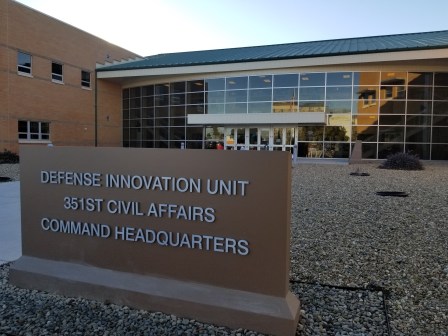AUKUS eyes opportunities for expansion — on a ‘project-by-project’ basis

LONDON — The AUKUS trilateral security partnership is making progress in new discussions with Japan about deepening collaboration to jointly advance the interoperability of their militaries’ maritime drone systems.
Additionally, the partnership — launched in 2021 between Australia, the U.K. and the U.S. — is also in ongoing consultations with Canada, New Zealand and Korea to pinpoint possible new areas of cooperation under AUKUS Pillar 2, which entails the co-development of disruptive defense technologies across six focus areas, members of Defense Sec. Lloyd Austin’s team confirmed last week ahead of AUKUS’ ministerial meetings in London.
However, considering the technical intricacies and security sensitivities associated with AUKUS Pillar 1, which underpins Australia’s acquisition of its own nuclear-powered attack submarine force and the rotational basing of U.S. and U.K. subs with the Pacific nation, extending that work to other countries might occur “decades from now” and likely won’t be happening anytime soon, a U.S. military official told DefenseScoop.
“Pillar 1 is a complex, multi-year effort that requires significant detail, commitment, and investment from all participating countries. You can’t begin the process, get halfway, and then decide to include others,” the official explained.
In discussions leading up to, on the sidelines of and immediately after AUKUS’ third formal set of bi- and trilateral meetups, hosted in the United Kingdom last week, defense officials shed light on the possibilities they envision for expanding elements of the technology-enabling partnership in the years to come.
“Under Pillar 2, we do see opportunities to offer other countries the ability to work with us on specific projects. There are countries that want to work with us that bring a lot to the table, and on a project-by-project basis, we will endeavor to work with those countries, ensuring that all the right [security and intellectual property protections] are taking place,” Austin said during a press briefing alongside his AUKUS counterparts on Sept. 26.
“We don’t take that for granted,” the U.S. defense secretary added.
During the open press portions of the formal ministerial gathering — which took place in different locations across the historic Royal Naval War College — Austin and his Australian and British counterparts made multiple announcements on recent progress via AUKUS.
The military chiefs spotlighted recent momentum they’re building in terms of amending their respective export control regimes — and particularly reforms to the U.S. International Traffic in Arms Regulations (ITAR) — to make it easier for the partners’ industry players to share software, hardware and technical data in a safe and compliant manner.
Among a variety of updates on Pillar 1, Australia’s Deputy Prime Minister Richard Marles and British Defense Secretary John Healey revealed that negotiations will soon kick off between their nations to produce a bilateral treaty outlining their co-development plans to generate the planned next-generation submarines, named SSN-AUKUS, in the years ahead.
Pillar 2 announcements included the results of the first-ever AUKUS innovation challenge, which was facilitated by and with the Pentagon’s Defense Innovation Unit.
Building on that success, Austin shared during the press conference that AUKUS innovation leads are now developing a “robust two-year agenda” to strengthen cooperation between their governments’ tech-focused centers of excellence.
“Over this past year, we’ve conducted several significant demonstrations and experiments across the ground, undersea, and along the electromagnetic spectrum. Taken together, all this progress will increase decision advantage for our warfighters. And we are excited to quickly field these new [and] advanced technologies across our forces,” Austin told reporters.
“Our acquisition teams are driving integration throughout our industrial bases and our innovation ecosystems. This will maximize our combined ability to develop, produce, and sustain these capabilities together,” the U.S. defense secretary also said.
Since its rocky origin in Sept. 2021, AUKUS has been considered a key line of effort for “reinforcing deterrence” against China and promoting regional security within the Biden administration’s Indo-Pacific strategy.
Some analysts have raised concerns that potential AUKUS expansion to include other nations — like New Zealand, Canada, Japan, or South Korea — might be viewed by the Chinese government as escalatory or provoke a response.
As Austin alluded to, and other defense officials confirmed in chats with DefenseScoop, the partnership is looking to grow its capacity and reach, specifically for Pillar 2.
“We have a project that Japan is joining. And we’re in conversations with three other [countries],” a senior U.S. defense official said during a conversation previewing the trip.
“But again, that’s exclusively on Pillar 2 and the emerging capabilities,” they emphasized.
When asked by DefenseScoop whether that could mean any alterations to the “AUKUS” acronym down the line, the senior official said: “I think we’ll probably keep the name AUKUS — but under the projects in Pillar 2, it’s open to looking for where we can work with additional partners to help achieve the outcomes of enabling the acceleration of critical advanced technologies.”
At the same time, largely due to the highly sensitive nature of U.S.-built submarine combat systems technologies, it’s broadly been understood since AUKUS’ inception that the partnership would not be extended to other countries for any work or assets under Pillar 1.
“The only other country we’ve done this for is the U.K., highlighting the seriousness. At this stage, opening it to more countries isn’t possible — though that could be, decades from now,” a U.S. military official told DefenseScoop.






